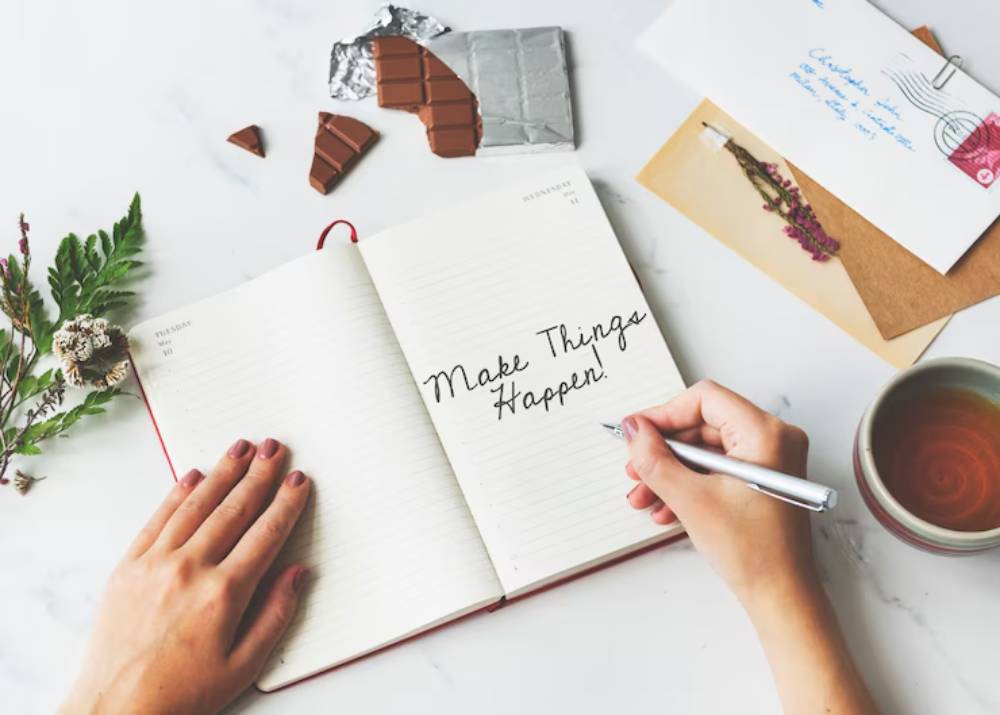
How Guided Journaling Transforms Decision Making
We’ve all been there — standing at a crossroads, paralyzed by indecision. Should you take the new job offer or stick with the familiar? Move cities or stay put? Big or small, decisions can feel overwhelming when doubts cloud your thinking.
In a world that demands fast answers, slowing down feels counterintuitive. But that’s where guided journaling comes in. It’s a quiet, powerful tool for sorting mental clutter, building emotional clarity, and making decisions that truly align with who you are.
If you’ve ever wanted a way to cut through overthinking and trust yourself more deeply, journaling for decision making might just be the skill you’ve been missing.
Let’s explore how this simple practice can transform the way you choose your path.
What Is Guided Journaling?
Guided journaling isn’t about free-flowing diary entries. It’s a structured form of self-reflection, shaped by targeted prompts
designed to lead you deeper into your thoughts and feelings.

Key Characteristics:
- Focused: Each session targets a specific topic, like a major choice or emotional block.
- Prompt-driven: Instead of rambling, you’re guided by smart, intentional questions.
- Solution-oriented: The goal is not just awareness but actionable clarity.
Imagine talking with a thoughtful mentor who only asks the right questions — that’s guided journaling on paper.
Real-World Example
Emma, a software developer, felt torn between taking a promotion or switching companies. Free-writing left her spiralling. But by using prompts like, “What excites me about each path?” and “Where do I feel fear?” she quickly saw that staying wasn’t about loyalty — it was about fear of the unknown.
This clarity gave her the courage to choose the path aligned with her future goals.
Why Guided Journaling Enhances Decision-Making
Clears Emotional Fog
When emotions are tangled, decisions suffer. Journaling helps surface and sort feelings — excitement, dread, guilt, hope — and separates them from the facts.
A study from the University of Texas showed that expressive writing improves emotional regulation, allowing better cognitive processing under stress.
Connects You to Core Values
Prompts like “Which choice reflects my values?” help you tune into what truly matters, rather than chasing temporary approval or avoiding discomfort.
When decisions are value-driven, they feel lighter, more authentic, and you’re less likely to regret them later.
Reduces Decision Fatigue
Air-traffic controllers and ER doctors aren’t the only ones battling decision fatigue. You face it too — every email reply, menu choice, or project deadline chips away at your mental energy.
Externalizing decisions onto paper:
- Lightens your brain’s load
- Helps you spot clear patterns
- Makes prioritizing almost automatic
Instead of wrestling in your mind, you can simply read your own insights.
Building a Helpful Guided Journaling Habit
You don’t need expensive planners or fancy pens to start. What matters is showing up — honestly and consistently.
Journaling Tips for Decision-Making
- Create a ritual: The same time and spot make the habit stick.
- Set a timer: 10–15 minutes is enough to break surface resistance.
- Don’t edit: Grammar doesn’t matter. Honesty does.
- Use a real notebook: Pen-to-paper activates deeper parts of the brain compared to typing.
Keep a small notebook just for decision-related entries. Reviewing your past dilemmas (and how they played out) builds massive self-trust over time.
Journaling Prompts to Navigate Big and Small Choices
Whether it’s about what to eat tonight or where to move next year, prompts help pull out the hidden layers of a decision.
For Everyday Decisions
- What outcome do I want most?
- What’s the easiest first step I could take today?
- If there were no consequences, what would I choose?
For Major Life Decisions
- What am I most afraid of — and why?
- How would my ideal future self advise me today?
- What am I saying “no” to if I choose this?
Quick Bullet List: Bonus Prompts
- What’s pulling me toward each choice?
- What’s pushing me away?
- Which fear is louder: fear of change or fear of regret?
Creative Variations on Guided Journaling
If the idea of writing paragraphs feels heavy, there are creative ways to mix it up:
- Mind Map: Sketch a visual map of options branching out from your dilemma.
- Pros & Cons with Feelings: Next to each “pro” and “con,” note how it makes you feel.
- Voice Memo Journaling: Record yourself talking through prompts. Great for talkers who freeze on paper.
- Vision Drawing: Sketch what life might look like after each decision.
Experimenting keeps journaling playful and avoids the trap of treating it like homework.
How Guided Journaling Boosts Mental Resilience
Decision-making isn’t just about picking the “right” choice — it’s about building inner resilience so that, whatever happens, you know you can handle it.
By regularly engaging with your fears, hopes, and values on paper:
- You normalize self-reflection — no longer scared of hard questions.
- You reframe failure — seeing it as learning, not shame.
- You develop emotional flexibility — adjusting to outcomes without collapse.
Over time, this resilience extends beyond decisions, shaping how you handle conflict, uncertainty, and change.
Real-World Reflection: A client, after journaling through a failed business launch, said, “I felt disappointed, sure, but mostly proud. I made a clear, informed decision. It didn’t work out, and that’s OK.”
That’s the power of resilience through reflection.
Common Pitfalls (And How to Avoid Them)
Guided journaling is powerful, but a few missteps can water it down:

How to Avoid:
- Skipping feelings: Balance logic and emotion.
- Treating journaling like a to-do list: Be curious, not obligated.
- Only focusing on fears: Include hopes and possibilities.
- Seeking immediate answers: Some decisions need time. Be patient.
Staying mindful of these traps keeps your journaling sessions fresh and productive.
Closing Thoughts: Your Best Decisions Are Waiting
You don’t have to wrestle alone with tough decisions. You don’t have to stay frozen at the crossroads. Guided journalinggives you a flashlight—it allows you to see through the fog, connect to your real self, and choose with confidence.
It won’t magically make hard choices easy. But it will give you a process — a reliable way to think, feel, and act that builds self-trust with every entry.
Next time you’re stuck, grab a pen. Open a notebook. Ask the questions. Listen carefully.
You already have the answers inside you. Journaling just helps you hear them.